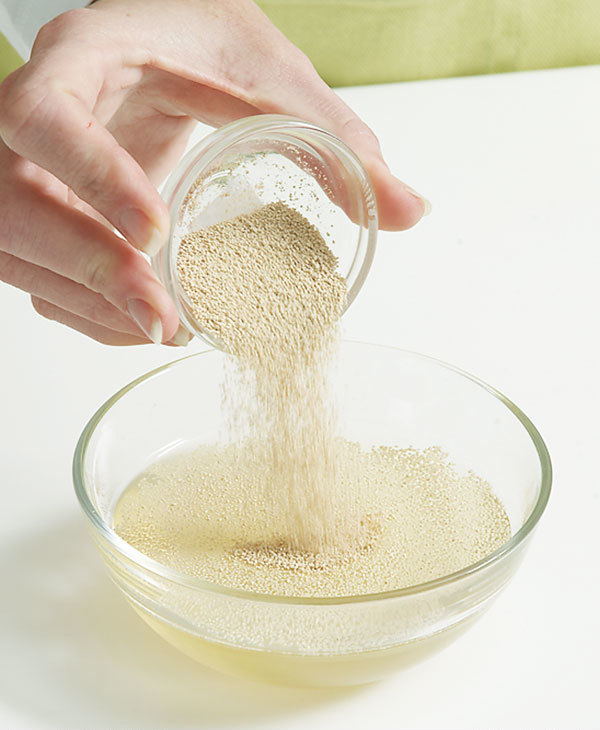All About Yeast
Some yeast needs to be proofed before using, while other types allow you to skip the step. So what's the difference?

Yeast is a single-celled, living organism that feeds on sugar to survive. As the yeast eats, it gives off carbon dioxide, which leavens dough. Proofing yeast is the act of mixing it with sugar to ensure it's still alive, as well as to "wake" it and start the process that causes dough to rise. These days, not all yeasts are created equal, and manufacturers are making it easier to use by even the most novice home bakers.
-
Active dry yeast is the type most home bakers are likely familiar with. The moisture has been removed using hot air, which leaves it dormant until you rehydrate it. As long as the yeast hasn't expired, you shouldn't need to test whether it's alive. However, it's still a good idea to proof it because the sooner you activate the yeast, the quicker your dough will rise. Just be sure to use warm water, not hot, or you have a chance of killing the yeast.
-
If you want to save a little time, instant yeast is a good alternative. It's found under many names: rapid-rise, bread-machine, quick-rise, and perfect-rise. Its manufacturing process means that it rehydrates on first contact with liquid, so it has virtually no chance of being killed. You can use instant yeast in place of active dry with very similar results, and you don't need to proof it.
Product Recommendations
Interested in cooking? Need some supplies?
Check out some of the tools we like. All products featured on Cuisine at Home are independently selected by our editors; we may earn an affiliate commission from qualifying purchases through our links.